The growing popularity of disposable vapes has introduced convenience to millions of users, but with it comes a growing concern regarding their proper disposal—especially when these devices malfunction and begin auto-firing. Auto-firing occurs when a vape activates and emits vapor without user input, often due to internal circuitry faults or battery issues, posing potential safety risks, such as overheating or short-circuiting. This blog provides a comprehensive guide on how to safely manage and dispose of these malfunctioning devices, ensuring safety for individuals and minimizing environmental impacts. By understanding the technical aspects of auto-firing vapes, identifying dangers, and incorporating environmentally responsible practices, readers can make informed decisions that align with safety protocols and sustainability standards.
What causes a disposable vape to auto-fire?
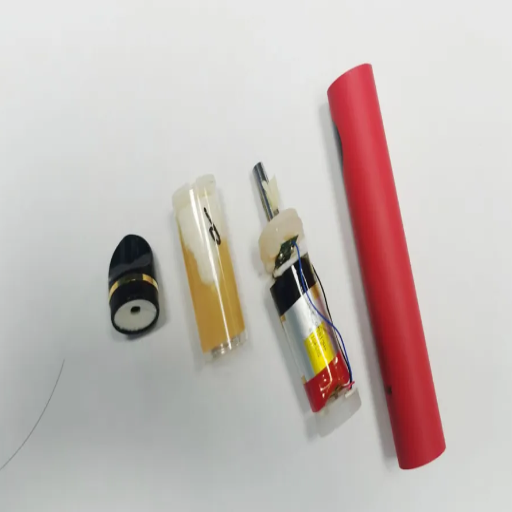
Common reasons for auto-firing issues
The most common reason behind auto-firing in disposable vapes is:
- Battery Issues: A lithium-ion battery that is defective or physically damaged contributes to excessive or uncontrolled power output. This results in the device activating without the user needing to press buttons. Such issues tend to take place when internal battery management systems (BMS) malfunction or shorts happen from physical damage or defects during manufacturing. For example, a standard disposable vape battery has a nominal voltage of 3.7V, any over-discharging or short-circuiting will result in vapid firing.
- Bad Electronics: Internal electronic parts like a MOSFET (Metal-Oxide-Semiconductor Field-Effect Transistor), which controls power delivery, can fail too. Overheating, poor solder joints, and moisture can cause the failure of a MOSFET. Certain critical factors like the threshold voltage (approximately 2 – 4 volts for low power needs) when exceeded can cause vapid firing suffering greatly. This undoes the critiquing desired and needs a lot of power wasted in the process.
- Problems with Buttons or Sensors: Some gadgets that have buttons will have issues where they are stuck or misaligned in the firing area or Some auto–draw vapes use airflow sensors. In cases where these sensors are damaged or have debris, misfires may be initiated. These sensors are meant to detect minute pressure variations, usually between 20-50 Pa, but can malfunction and mimic inhaling, causing auto-firing.
Getting rid of these issues often consists of doing quality checks for any damaged parts which need to be replaced, or following proper construction guidelines for safety and correct usage.
How to identify an auto-firing vape
Recognizing an auto vaping device that fires on its own often comes from observing peculiar behaviors or carrying out specific checks. One warning sign is any event where the device fires by itself without the need to inhale or press the button, such occurrence is frequently seen with the coil burning up the battery draining abnormally, or even the device producing vapors on its own.
- Airflow Sensor Functionality: Check if the pressure range is usually between 20 to 50 Pa. If the sensor is overly sensitive, then it may consider debris and other objects as inhalation.
- Button Mechanism (for manual-trigger vapes): Check the firing button to see if it is loose or damaged due to overuse, there is a chance that the button might be jammed and can consequently get stuck permanently.
- Circuit Integrity: Inspect possible short circuits which are common occurrences where low resistance fires the device by mistake because of bad electrical connection.
- Moisture/Debris Presence: Collected liquid or debris on the sensor or circuit board can block key detection mechanisms and impede critical systems.
- Firmware Malfunctions (for advanced devices): The device needs to be checked for the most up-to-date firmware. If the firmware is corrupted, the device is not able to manage to supply the battery or will miss inputs.
Prompt action addressing auto-firing thereat helps reduce chances of overheating or turning the device unresponsive for a long time while ensuring the safety of the user in addition to protecting the hardware.
Potential dangers of auto-firing disposable vapes
The phenomenon of auto-firing in disposable vapes can lead to overheating and even battery failure. Failing anything else, this overheating can cause significant danger to the user. For example, vaping devices automatically firing implies that the coils will remain active for far too long. This may lead to excessive heat generation which can lead to the vaporizer’s structure getting compromised. In the worst case, there may even be a thermal runaway in the device’s lithium-ion battery.
A thermal runaway refers to a state that a vaporized battery reaches when its internal temperature increases drastically, leading to the possibility of combustion. Not to forget, thermal runaways are greatly facilitated by lithium-ion batteries notoriously having poor internal temperature regulation. Once the temperature begins exceeding its limits, it may lead to the battery exploding.
Moreover, a secondary byproduct of prolonged heat exposure is the breakdown of e-liquid. Acrolein and formaldehyde are toxic and the extremely high temperature alongside prolonged exposure leads to combustion which only adds to the nightmare. To provide a more relatable example, lithium-ion batteries are usually charged and discharged at 0°C and 45°C (32°F to 113°F).
Last but not least, in terms of functionality, auto-firing vapes are a hassle. Although they lead to depleted batteries and burned coils, this renders the device completely useless, and inoperable. Hence it’s best to carry out regular inspections, along with firmware updates, and never expose the device to extreme temperatures or any harmful physical damage.
How do I stop my disposable vape from auto-firing?
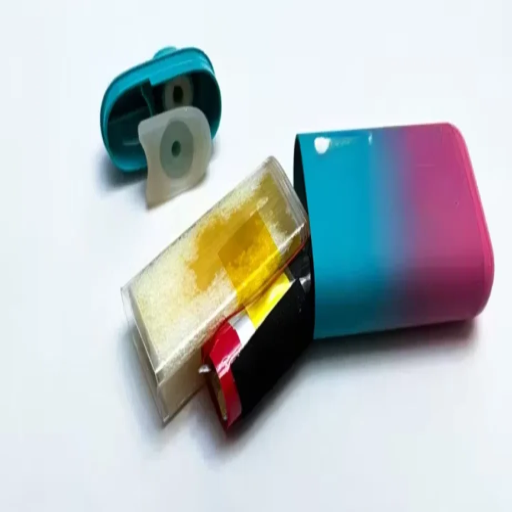
Immediate steps to take when your vape auto-fires
In the instance that my power source is detachable, I begin by removing the source immediately. If detached isn’t an option, my first step is to cover the airflow holes to cut off the oxygen supply. For most disposable vapes, recollection of the airflow holes alongside halting oxygen flow helps with the heating process. On top of that, I ensure there are no flammable materials in the vicinity of the device. I then proceed to cool the area. Through cooling, the device is mitigated from any further risks. To auto-fire in the indefinite future, the device should be placed in a vicinity with no eligible materials.
When viewed from a technical aspect, the heating components alongside the auto-fire feature internal circuitry. To stop the process of auto-firing, the components within the vape and the provided variables should be mitigated. The temperature and voltage should be severely self-controlled. For instance:
- Operating Temperature Range: The temperature isn’t to dip below 0 degrees or exceed 45 degrees Celsius. If so, internal components will suffer greatly.
- Battery voltage: The battery should remain at its original recommendation. Most vapes operate from 3.7 to 4.2 volts.
After resolving the immediate issue, I thoroughly inspect the device, looking for visible damage or leakage. If necessary, I dispose of the vape responsibly and avoid using it further, as the integrity of the device might be compromised.
Troubleshooting auto-firing disposable vape devices
In case some problems arise with auto-firing disposable vapes I embark on a methodical technique to make sure that I identify and solve the problem as efficaciously as possible. The first step involves verifying whether the firing mechanism can be deliberately activated, possibly due to an airflow sensor or button being covered by dust or debris. If the issue involves debris, then cleaning the device carefully with compressed air usually fixes the problem.
Then I check the internal sensor or activation mechanism. In some cases, auto-firing may occur as a result of compromised circuitry. With the disposable vapes, I look for liquid buildup or leakage around the battery and sensor, as this may unintentionally activate the device. If you detect a short circuit, you should stop using the device and throw it away immediately.
I also look over the device’s battery and its voltage stability. The built-in battery can often try to operate out of a range of 3.7 to 4.2 volts which can indicate risk of malfunction, including auto firing. Since adjustments like these can’t be made on disposable models, these too may need to be tossed away.
Finally, I look into environmental elements. For instance, the device might overheat and self-fire if it has been exposed to temperatures above 45 degrees Celsius. In addition, one should always keep the device in a controlled environment so that no temperature issues arise. To solve issues, I systematically think of all the factors that led me to the conclusion in the first step, and make sure to prioritize safety inherently as well.
When to consider disposing of an auto-firing vape
An auto-firing vape should be disposed of when evidence suggests destruction beyond repairing or the possibility of any safety risks. First, if the device continues to auto-fire despite figuring out obstacles like debris inside the fire button or dirty contacts, the auto-fire feature appears to be functioning. This is likely to happen due to damaged internal circuitry. Usually, the damage is produced by some type of short circuit in the battery or wiring.
Second, in case the device has received some form of physical wear and tear, such as a break in the shell, cracked body casing, or wires exposed externally, this case undergoes severe physical and thermal damage. This would heighten the chances of wires touching each other leading to electrical burns and the device auto-firing. Conversely, being drastically outside of a predefined environment also is a case for destruction. For instance, a temperature beyond 45 degrees Celsius or less than -10 degrees Celsius for an extended period would cause a severe dent in the battery’s life. This deterioration causes the battery to bulge and even leak which are conditions that make the vape not be used at all.
Lastly, if the device shows symptoms of a malfunctioning chipset, like incessant misfires post reset and recalibration, it suggests that there is an internal control failure. The device’s inability to restrict the safe resistance range which is 0.1 ohms and 3 ohms for a majority of controlled mods, is another valid reason deemed to be a technical fault that warrants disposal. An auto-firing vape’s lifespan should always be centered around the user’s safety.
What’s the proper way to dispose of an auto-firing disposable vape?
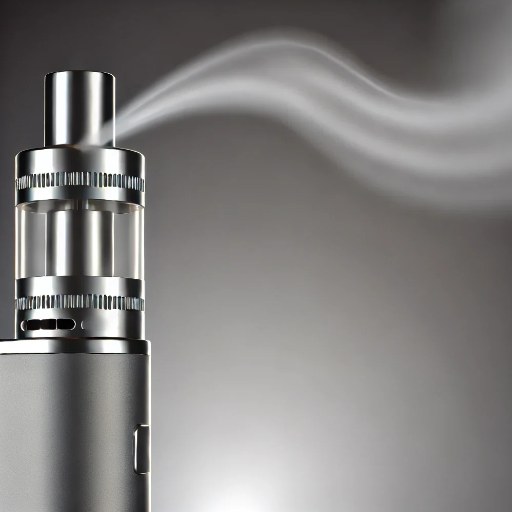
Safety precautions for handling malfunctioning vapes
Whenever you encounter a broken vape, especially one that is auto-firing, safety must always come first to avert accidents or health threats. Remove the vape from anything flammable as the first step. For devices that have removable batteries, remove the battery slowly to stop the device from auto-firing. This will disable the power. If the vape in question is of the disposable type, avoid making any contact with the heating element as it can lead to overheating and burning or even mechanical failure.
- Resistance Limits: Make sure that the coil resistance of the device is checked and does not go lower than 0.1 ohm or higher than three ohms since anything outside this range would indicate a fault which makes the device unsafe for use.
- Voltage and Current Checks: In systems that allow external access, double check the output voltage, and remember not to exceed the declared operational limits borders (which is normally 3.7V for most Li-ion batteries). Usually, a short circuit or defective hardware is symbolized by an over-excessive current capture.
- Temperature Risks: Do not attempt to handle the device further if it appears to exceed 120°F (49°C), as it could pose a fire injury risk without proper insulation.
Never attempt to meddle with the internal parts, as this may make the issue worse or even provoke a dangerous reaction. Be sure to get rid of the device by local e-waste and hazardous material regulations to mitigate environmental and personal safety threats.
Steps to safely remove the battery from disposable vapes
- Prepare the Necessary Tools: Gather insulated gloves, safety goggles, and a set of small tools such as pliers and screwdrivers. Ensure you are working on a non-conductive surface with adequate ventilation.
- Discharge the Vape Battery: Before starting, ensure that the disposable vape is fully discharged to minimize the risk of electric shock. This step is crucial because lithium-ion batteries can pose a hazardous reaction if mishandled while charged.
- Open the Housing: Carefully disassemble the outer casing of the vape using a screwdriver or a flat tool. Do this gently to avoid puncturing or damaging the internal components, especially the battery.
- Identify the Battery: Locate the vape’s battery, typically a lithium-ion cell. Ensure no wires are excessively frayed or touching any conductive surfaces.
- Detach the Battery Safely: Use insulated pliers to gently disconnect any soldered or press-fit attachments between the battery and other electronic components. Avoid using excessive force as this can puncture the battery, resulting in leakage or combustion of the electrolyte.
- Insulate the Terminals: Cover the battery terminals with non-conductive tape, such as electrical tape, to prevent accidental short circuits.
- Dispose According to Regulations: Store the removed battery in a non-conductive container and take it to an authorized e-waste recycling facility. Most recycling centers accept lithium-ion batteries at no cost, ensuring they are disposed of in an environmentally compliant manner.
By following these steps and considerations, you reduce risks related to electrical shock, thermal events, and environmental hazards during battery removal.
Proper disposal methods for e-cigarette components
Taking apart an e-cigarette follows the dictum of the green movement for any electrical appliance assuming that certain components like lithium-ion batteries, cartridges, and plastic casings do require a more controlled method of disposal. Cartridges and plastic components need to be disposed of more elegantly to minimize environmental impact.
- Batteries: Each lithium-ion cell, rated at voltages between 3.6 to 4.2 volts per cell may contain chemicals harmful to the environment when disposed of incorrectly. It is crucial to always place them in action for recycling or placing them into separate e-waste containers. Always ensure they are stored in nonconductive containers and are transported carefully.
- Cartridges/Pods: Empty cartridges often contain leftover nicotine which in itself is highly toxic. They can’t be rinsed out unless local law allows so as that will allow harmful chemicals to be released into the environment. Cartridges should only be shredded if they are sealed properly.
- E-Liquids: Leftover e-liquids should never be directly dumped in the drain as they can be detrimental to water supplies, instead they should be absorbed onto kitty litter or coffee grounds and sealed in a bag. Finally, it should be disposed of as hazardous waste.
These methods enable the proper, ecologically sound disposal of e-cigarette parts, mitigating any possible danger to the users as well as the environment.
Are there recycling options for disposable vapes?
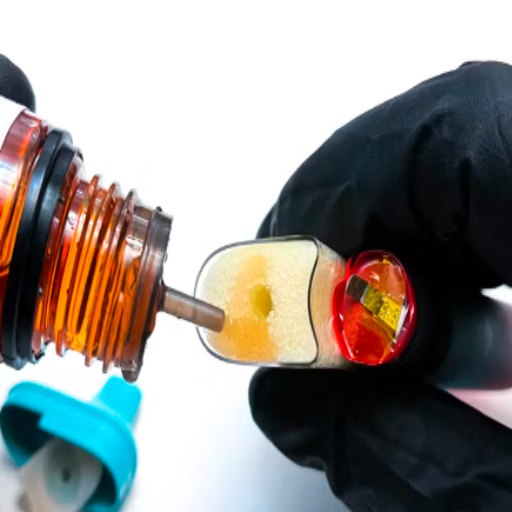
Recycling programs for e-cigarette devices and batteries
Indeed, there are e-cigarette devices and battery recycling programs, which if utilized, can reduce one’s carbon footprint. Numerous manufacturers and retail outlets maintain take-back schemes where used devices and batteries can be returned for recycling. I suggest contacting the e-cigarette manufacturer or local shops to find out if they accept orders for drop-off or mail-back services.
About batteries, it is worth mentioning that lithium-ion batteries which are widely used in e-cigarettes have particular requirements for recycling. These batteries must be disposed of at designated e-waste recycling facilities or battery drop-off locations. These factors which necessitate their specialized disposal include the possible release of harmful agents like lithium, cobalt, and nickel and if these materials were to go uncontrolled, they would pollute the soil and water. Furthermore, it is imperative to ensure that batteries are discharged properly before disposing of them to limit the chances of short circuits or fires happening during the recycling process.
As long as these schemes are followed, and the e-cigarette parts are treated by their technical requirements, the disposal process is much simpler and safer. You must also observe the local laws and regulations concerning the use of e-waste to be compliant socially and environmentally.
How to separate recyclable components from disposable vapes
My approach would take into account the separation of recyclable elements from disposable vapes. It would be important to adhere to regulations related to industrial safety and the demanufacturing processes planning stage. First, I would disassemble the vape by taking the casing apart. The vape is made of plastic or aluminum which can be cleaned and recycled. Then, I would proceed to take out the battery, which is usually a lithium-ion cell. Before moving it, the battery must be discharged completely to avoid short circuits. After that, the battery must be driven to an authorized e-waste recycling facility to dispose of the hazardous lithium and cobalt.
I will also extract the circuit board as well as other electronic parts because they have some precious metals. Such components should be sent to specialized e-waste recyclers for material recovery. Finally, the cartridge and the remaining e-liquid must be disposed of by the regulations on hazardous waste because they are toxic.
- Battery Discharge Voltage: Remove the battery when it is below 0.2 volts to avoid risk during extraction.
- Material Segmentation: Classify plastics, metals, and electronic parts separately to facilitate their compatibility with recycling processes.
- Storage Conditions for Batteries: Batteries should be kept in a dry and cool place within a non-conductive container until they are ready to be transported.
With this method and local e-waste legislation, I can responsibly recycle the disposable parts of vapes.
What are the environmental impacts of improperly disposed vapes?
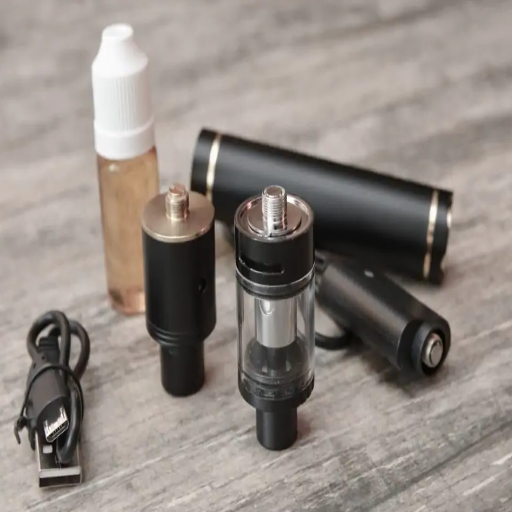
Hazards of e-liquid and battery waste
The improper disposal of e-liquids and batteries is detrimental to public health and the environment. E-liquids contain nicotine which, if not disposed of properly, is very toxic and can contaminate streams and soil. Even tiny percentages can be detrimental to the water ecosystem and enter the food chain. Additionally, the batteries used for vapes are mainly lithium-ion which contains hazardous substances such as cobalt and nickel. When disposed of improperly, they can contaminate water and soil, starting fires in landfills due to the high level of energy they possess.
- Toxicity Threshold: Nicotine can be harmful to the environment if released as e-liquids which are in excess and are soiled with the residue of lithium-ion e-cig batteries. The lethal dosage of nicotine for 30-60 Mg is enough to kill a man, therefore pouring these toxins into the ecosystem can be dangerous.
- Battery Flammability: Lithium-ion batteries can burn and ignite when broken and exposed to high temperatures of 60 Degrees Celsius (140 Fahrenheit) making it a fire hazard in waste pleas.
- Leaching Potential: Metals such as cobalt and nickel are notoriously fuable in acidic conditions and can contaminate the surrounding environment for a long period posing a toxic risk.
These risks highlight the need for proper procedures for the disposal and recycling of batteries and e-liquids.
Long-term effects of vape waste on Ecosystems
An ecosystem can be profoundly affected because of improper disposal of vaping waste and its components. It contains nicotine, which can be particularly detrimental to the soil and waterways. While nicotine can have some positive effects on living organisms, it also has some extremely negative effects on toxins, insects, and aquatic species. The levels at which nicotine proves toxic to some aquatic species is as low as zero point five milligrams per liter. When this bioaccumulates over some time, it is bound to interrupt biodiversity and ecological balance in a region.
The chemical composition of lithium-ion batteries makes them a greater threat to the environment. Cobalt, nickel, and manganese are some essential metals that can leach into soils under acidic conditions. Cobalt can be detrimental to plant life and soil microbes, especially in the concentration of zero point one milligram per liter. This not only leads to the contamination of groundwater but also consumes the natural soil fertility in the region, which renders agriculture ineffective. Moreover, extracting metals from soil contaminated with lithium-ion batteries is an incredibly intensive and tedious task, making the entire process of remediation lengthy.
Moreover, storing lithium-ion batteries inappropriately exposes them to fire hazards, for instance, physical damage. Fires that break out in land fills can emit harmful gases like hydrogen fluoride, which are extremely hazardous to human health and lead to air pollution.
Such accumulative consequences portray that the socioecological impact of vaping waste is severe, and its remediation through relevant recycling and control efforts is profoundly mandated.
Reference sources
Frequently Asked Questions (FAQs)
Q: What are the reasons why your disposable vape might be auto-firing?
A: There are several reasons why a disposable vape might be auto-firing, including a malfunctioning coil, damaged battery, or liquid leaking into the device’s internal components. Extreme temperatures can also cause auto-firing issues. If you experience this problem, it’s essential to stop using the device immediately and dispose of it safely.
Q: How can I safely dispose of e-cigarettes and disposable vape pens?
A: To safely dispose of e-cigarettes and disposable vape pens, first remove the battery if possible. Then, take the device to a household hazardous waste collection site or a specialized e-waste recycling center. Never throw these devices in regular trash or recycling bins, as they can pose fire and environmental hazards.
Q: What should I do if my disposable vape is auto-firing?
A: If your disposable vape is auto-firing, immediately stop using the device. Remove it from any heat sources or flammable materials. If possible, carefully disassemble the device to separate the battery. Then, follow proper disposal procedures for electronic waste and batteries. Do not attempt to continue using a malfunctioning vape, as it can be dangerous.
Q: Are there any resources available for information on disposing of vaping devices?
A: Yes, there are several resources available. The US EPA website provides information on e-cigarette disposal. Many local government websites also offer guidance on proper disposal methods. Additionally, some vape shops and manufacturers provide disposal instructions or take-back programs. You can also find printable fact sheets online with information on safely disposing of vaping devices.
Q: How can I prevent my vape from auto-firing?
A: To prevent your vape from auto-firing, avoid extreme temperatures and keep your device clean. Don’t overcharge the battery or expose it to moisture. When not in use, turn off the device or remove the battery if possible. Regularly inspect your vape for any signs of damage or wear. If you notice any issues, stop using the device and dispose of it safely.
Q: What are the risks associated with nicotine waste from disposable vapes?
A: Nicotine waste from disposable vapes can be harmful to the environment and pose health risks if not properly disposed of. Nicotine is toxic and can leach into soil and water systems, affecting plants and animals. It’s also a potential hazard for children or pets if they come into contact with improperly discarded devices. Always dispose of nicotine-containing products at appropriate waste collection sites.
Q: Can schools and small businesses participate in proper vape disposal programs?
A: Yes, schools and small businesses can and should participate in proper vape disposal programs. Many local waste management authorities offer specialized collection services for electronic waste, including vaping devices. Schools can set up collection points for students to safely dispose of vapes, while businesses can implement policies for proper disposal. Both can also educate their communities about the importance of safe e-cigarette disposal.
Q: What’s the best way to ensure my disposable vape is not a fake?
A: To ensure your disposable vape is not fake, purchase only from reputable retailers or directly from manufacturers. Look for authentic packaging, security codes, and holograms. Check the manufacturer’s website for information on how to verify genuine products. Be wary of unusually low prices or unfamiliar brands. Using a fake vape can be dangerous and may increase the risk of auto-firing or other malfunctions.







